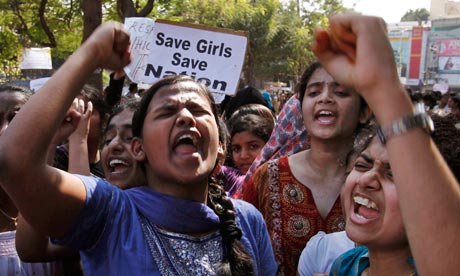Do Legal Professionals in India Believe Abortion Is A Woman’s Right?
The estimates for the number of abortions taking place in India vary widely. It is estimated that there are about six million abortions annually in the country, of which only one million are legal . Abortion related morbidity and mortality is also high in the country. Consequences of unsafe abortions are estimated to contribute to 9% of all maternal mortalities in the country. And estimates suggest that there are 12,000 deaths a year on account of unsafe abortion.

This is despite the fact that in India abortion laws are relatively liberal and permit abortions under specific conditions. The Medical Termination Act or MTP Act as it is commonly known, permits the termination of pregnancy up to 20 weeks, where the continuance of the pregnancy would involve a risk to the life of the pregnant woman or of grave injury to her physical or mental health; or where substantial risk exists of the child being born with serious physical or mental abnormality exists. In the explanation of the Act, the note also indicates that pregnancy due to failure of contraceptive methods could also be aborted as the “anguish caused by such unwanted pregnancy may be presumed to contribute a grave injury to the mental health of the pregnant woman”.
With the advent of ultrasonography, the contraceptive failure clause under the MTP Act helped the cause of sex selection. The 1991 Census Sex ratio figures were alarming enough for the country’s policy makers to enact the Pre-natal Diagnostic Techniques (PNDT) Act on 1st of January 1994 to prevent the misuse of ultrasonography to check and selectively eliminate the female fetus.
In 2008, ASAP planned a multi-country study that went beyond the community- provider interface and explored the views of gatekeepers such as lawmakers and implementers who are outside the service provision field. The findings from the interviews of 50 legal professionals in India are presented against the overview of the abortion statistics and the legal context of abortion in the country.
Abortion Trends:
There was a wide variation amongst the respondents about the abortion scenario in the country. While the reason for abortions according to them ranged from unwanted pregnancy because of family size (25/50), socio-economic condition (13/50), female foetus (22/50), and rarely health of the woman or the unborn child (6), those for illegal abortions were the unawareness about legality, approved centres, providers and sometimes stigma of being seen in the approved facilities.
Awareness On Women’s Rights Issues:
Forty respondents (of which 8 were female law professionals) were unaware of the debate on women’s rights or did not actively subscribe to the notion. The reasons given by the latter were illiteracy and poverty in India.
One woman lawyer said, “I think that the concept of rights is not yet crystallised in India because of low level of awareness among people, low socio-economic status of large population and low levels of education.”
Abortion As A Public Health or Social Justice Issue :
Thirty nine respondents mentioned that abortion can be argued as a woman’s rights issue, twenty eight believed it to be a social justice issue and seventeen as a public health issue. The general response was that it becomes a woman’s rights issue when it is related to her health and the product is the result of sexual offence. It becomes a public health issue when abortions are conducted by unqualified doctors and a social justice issue when abortions are on account of sex detection.
Interestingly, all 17 female law professional looked at abortion as a predominantly women’s rights issue and half each mentioned that the issue had implications for public health and social justice. The arguments they gave were:
“It does become a woman’s rights issue when it is related to her health and the product is the result of sexual offence. It becomes a public health issue when abortions are conducted by unqualified doctors and a social justice issue when abortions are on account of sex detection.”
Discussions:
The MTP Act that was supposed to eliminate unwanted or forced pregnancies and unsafe abortion fell short of serving its purpose due to multiple reasons. The impression that abortion was legalized through the Act itself was erroneous as the Act only specified certain conditions under which a pregnancy could be terminated. Moreover, the Act has loopholes that can be exploited though varied interpretations. For example, though the Act mentions that the medical opinion must be given in “good faith”, the term good faith has not been defined. On the other hand the faulty interpretation of PCPNDT Act in many states led to biased implementation.

The attitude of the lawyers towards the entire issue was based largely on hypothetical situations since they did not face these cases in reality. In fact a number of them labeled the matter “petty” or “too small” for paying so much attention in the face of the huge legal delays and backlog of cases in the courts. In fact, many believed that even if it did become a regular component of the law curriculum there would be few takers given the low potential for such cases in the practice.
To summarise, the lawyers were not only poorly informed but also had reservations about the entire debate on expansion of abortion services and abortion as woman’s right. There were still voices which believed that problems were largely due to inappropriate and lenient attitude of enforcement authorities. Most respondents believed that the law had come into existence to control the declining sex ratios and make women more liberal but also indicated that though abortion was seen as woman’s right; they did not particularly support this as an example of women’s rights.
Read The Entire Paper here: http://asap-asia.org/publications/2009/India_Abortion_Booklet_Update.pdf






